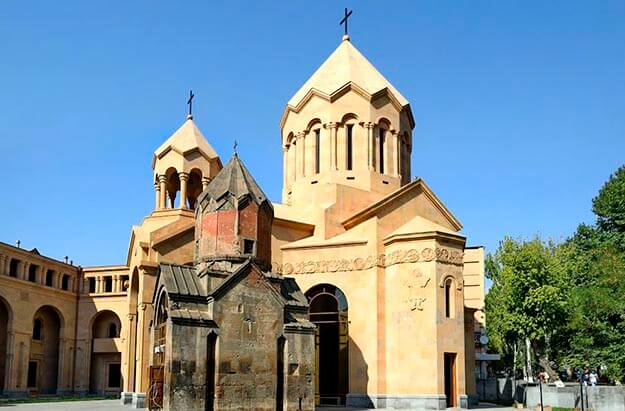Katoghike Church

17 Abovyan St, Republic of Armenia, Yerevan 0001
Katoghike Holy Mother of God is a small medieval church located in the Kentron District of Yerevan. The oldest script carved on one of the walls of Katoghike dates back to 1264. The Church was seriously affected by an earthquake in 1679.
Later (between 1693 and 1695), a large basilica named after the Holy Mother of God was built around the preserved chapel. It was a three-nave basilica type church built of Armenian tufa stone. The basilica didn’t have a dome; it had two entrances from the south and west and a prayer hall, which was considered to be the largest in old Yerevan.
In 1936, the Soviet Government ordered to demolish the basilica of the Holy Mother of God. Khachkars found in the walls during the demolition of the basilica date back to the 15th and 17th centuries. Only during the demolition, the small Church was discovered hidden in the walls of the basilica. The archaeologists and the citizens protested against the destruction of the old Katoghike church and insisted on preserving it.
The inscriptions engraved on the western façade of the Katoghike date back to 1284, 1229, and the inscriptions on the northern walls refer to 1609. Thus, archaeologists came to the conclusion that Katoghike dates back to the 10th century and is one of the churches that survived the earthquake of 1679.
Nowadays, the Church has two names Katoghike and Holy Mother of God. In recent years, a new complex was constructed beside the chapel. The complex includes a big church named after St Anna and a big building that is designed to serve as a residence of the Catholicos. The architect is Vahagn Movsisyan.
The consecration ceremony of the new complex took place on 30 April 2015. The Saint Anna Church was blessed by Catholicos Karekin II.
Nowadays, Katoghike Holy Mother of God serves only as a prayer house.












